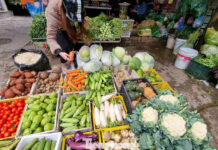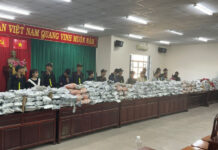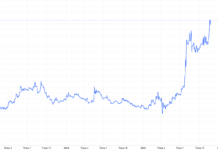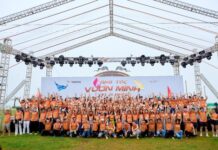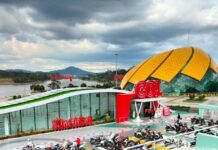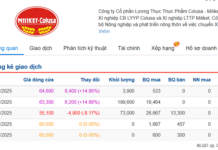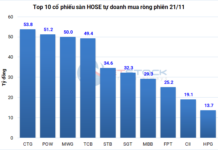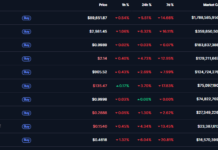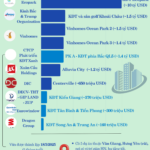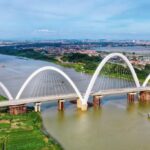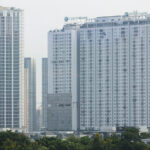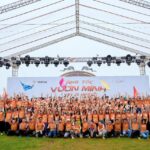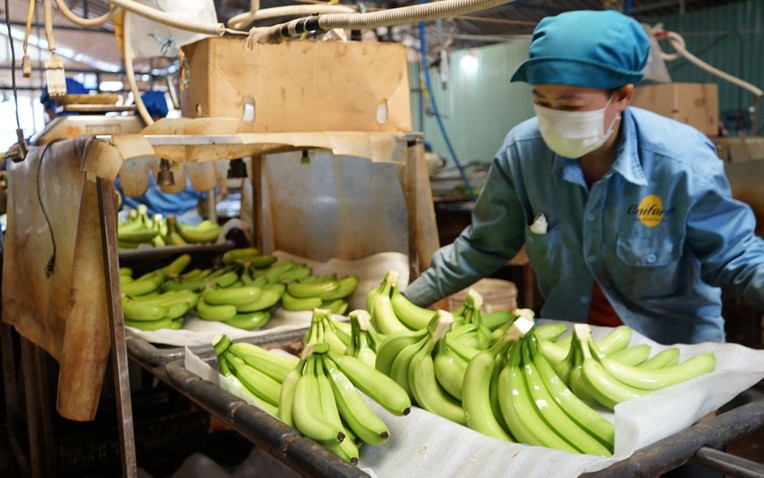
Vietnam boasts a diverse range of fruit crops, with over 1.3 million hectares of fruit trees producing approximately 15 million tons annually, according to the Department of Crop Production under the Ministry of Agriculture and Rural Development.
Banana cultivation alone accounts for 161,000 hectares, contributing nearly $380 million in export turnover in 2024, propelling Vietnam to become the 9th largest banana exporter in the world.
Vietnamese bananas have successfully penetrated demanding markets such as Japan, South Korea, the EU, the US, and especially China.

Illustration photo.
Nikkei Asia (Japan) has acknowledged the increasing presence of Vietnamese bananas in the Japanese market, gradually capturing market share from the Philippines due to their freshness and competitive pricing. Japan’s trade data reveals that banana imports from Vietnam reached 33,000 tons in 2024, nearly 14 times higher than in 2019.
In July 2025, the volume of Vietnamese bananas exported to the Tokyo area more than doubled compared to the previous year.
Regarding the Chinese market, in 2024, China imported 1.69 million tons of bananas, valued at $908 million, a 4.6% decrease in volume compared to the previous year.
Pioneer Enterprises and Modern Cultivation Models
The allure of Vietnamese bananas in the global market stems from the country’s shift towards sustainable development, meeting the standards of the most demanding markets.
It is no coincidence that internationally recognized Vietnamese banana brands exist. Behind the consistent quality of these bananas lies the dedication of skilled workers aided by advanced technology.
A prime example of this transformation is the Agricultural Joint-Stock Company U&I (Unifarm), the first company to introduce Vietnamese bananas to the world. Unifarm currently employs high-tech agriculture and is developing a model for growing bananas in greenhouses with a focus on circular economics.
banana
In the An Thai High-Tech Agriculture Area (former Binh Duong), Unifarm utilizes greenhouses, smart irrigation systems, compost worms, and byproduct reuse to reduce costs and protect the environment.
In 2017, Unifarm entered into an exclusive partnership with the Dole Corporation, ensuring stable output for export-quality bananas that meet international standards. The company expanded its banana cultivation area to thousands of hectares in the former Binh Duong and Tay Ninh provinces, collaborating with nearly 30 associated farms and providing employment for over 500 workers.
Unifarm has established a unified production process that meets stringent standards such as GlobalGAP.
The company’s banana production model not only contributes to the industry’s goal of achieving $4 billion in export turnover but also serves as a center for technology transfer and the dissemination of sustainable production practices to farmers and businesses.
Circular and Sustainable Trends
The global banana industry is undergoing a significant shift towards sustainable development, meeting market demands and environmental protection commitments. In cultivation, many enterprises are adopting organic models, intercropping (agroforestry), and drip irrigation systems, reducing chemical usage while conserving biodiversity and water resources. Simultaneously, research institutes and manufacturers are focusing on breeding disease-resistant varieties.
Digital technologies, including drones, sensors, IoT, and blockchain, are being integrated into production processes to monitor crops, optimize yields, and ensure supply chain transparency. In the consumption phase, environmentally friendly packaging is gaining traction, with a shift towards biodegradable materials, banana leaves, or reusable designs, replacing plastic.
Beyond fresh bananas, the industry is diversifying into value-added products such as sliced and powdered bananas, and even utilizing banana fibers for textiles and handicrafts. This expansion is seen as inevitable for the banana industry to maintain its competitiveness, reduce environmental impact, and increase value for growers.
Vietnamese bananas are making significant strides in international markets due to their quality and innovative cultivation and processing methods. However, intense competition from major exporting countries, increasingly high quality standards, and crop disease risks necessitate continued investment in technology, new varieties, and sustainable strategies for the industry’s long-term success.
From Seoul to Gia Lai: Forging a Logistics Hub in Vietnam’s Central Highlands
Attending the Vietnam-Korea Economic Forum in Seoul, Gia Lai province left its mark with a series of strategic cooperation agreements across various fields.
The Capital Magnet: How a $7 Billion Investment Boost Empowers Vietnam’s Fifth-Largest Economy, as Deputy Prime Minister Assigns a Special Mission
With its strategic location, this province is a wise choice for investors, as highlighted by Deputy Prime Minister Nguyen Hoa Binh. The province boasts a multitude of strengths, including its proximity to Hanoi and Haiphong, its position on the trans-Asian corridor, and its closeness to China and ASEAN.
The Highest Steel Arch Bridge in Vietnam: A 2,000 Billion VND Wonder Over the Duong River.
The VTCO-WSP Finland joint venture brings an unparalleled level of expertise to the table, taking charge of architectural design, surveys, and engineering for this project. Their partnership ensures a seamless blend of innovative ideas and technical precision. Renowned for their engineering prowess, CIENCO1 takes on the construction aspect, translating designs into reality with their signature excellence.



